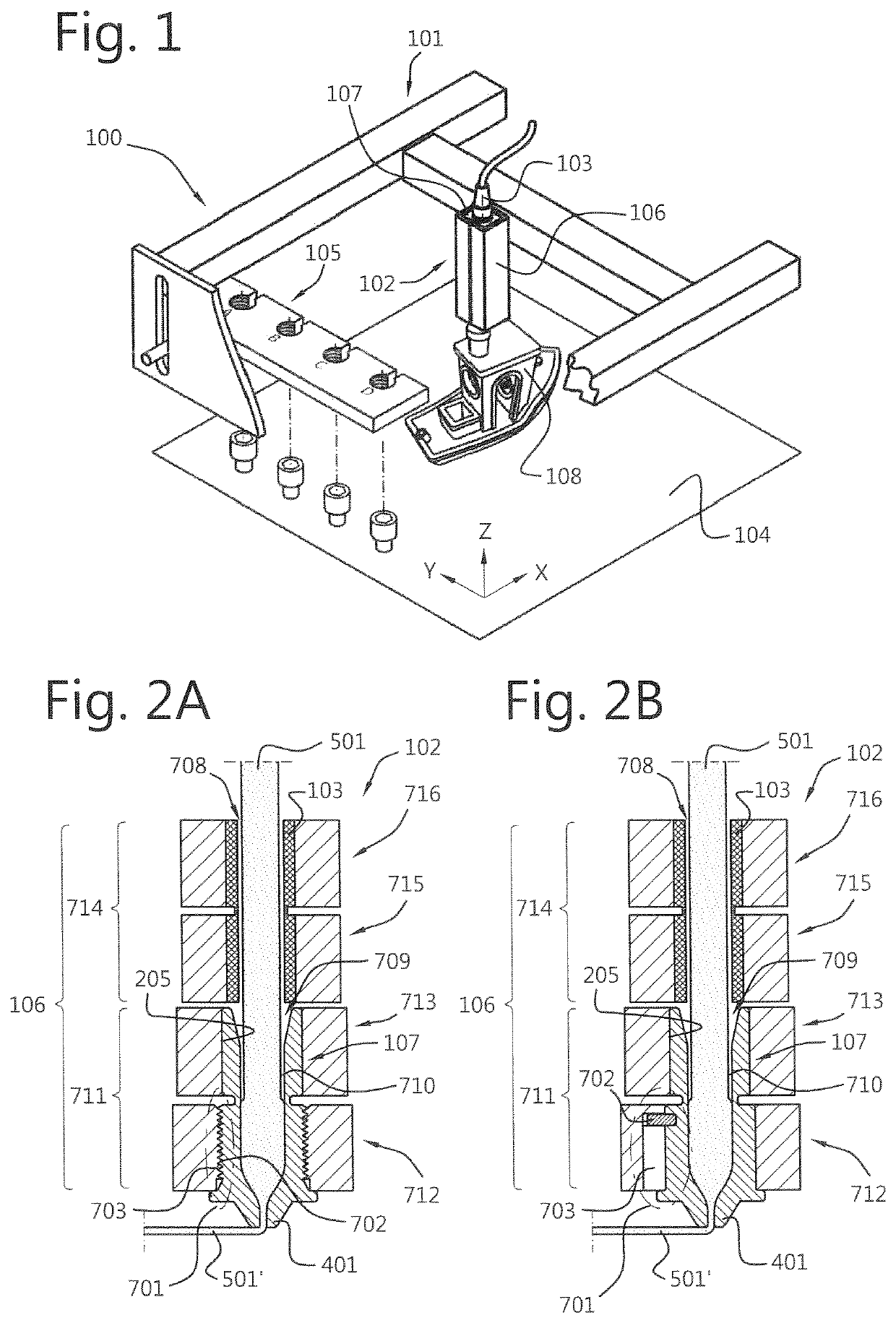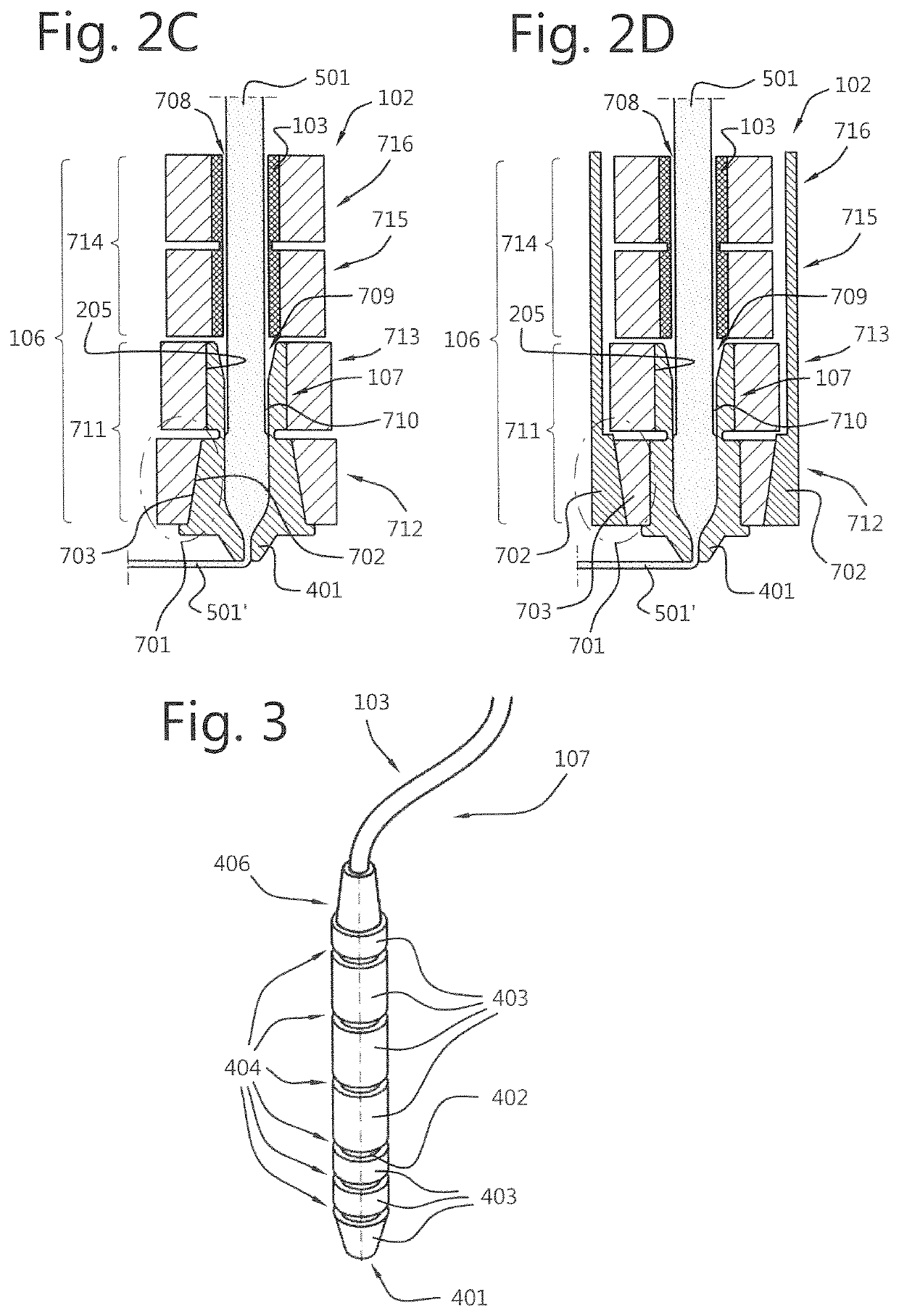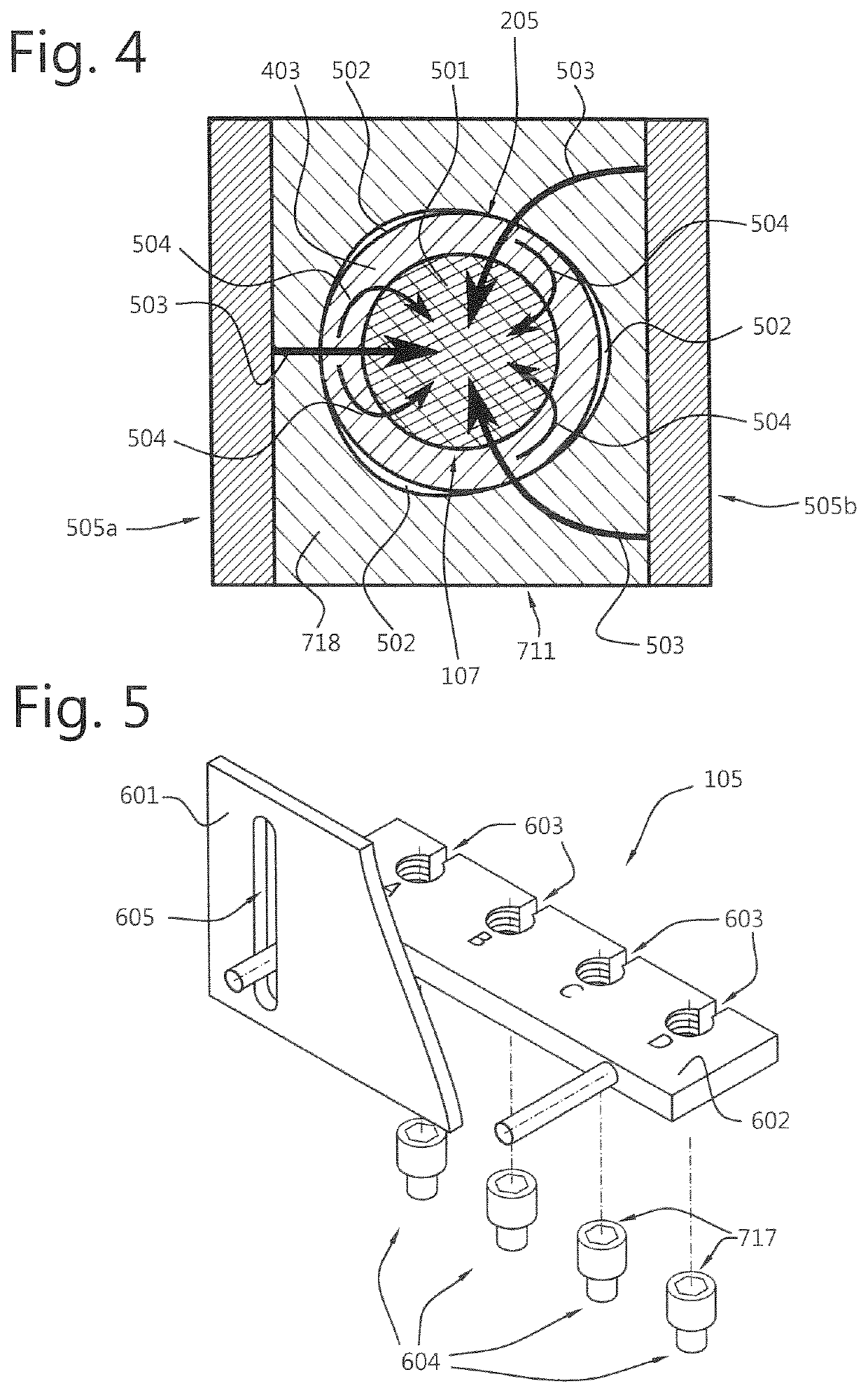System for additive manufacturing
a technology of additive manufacturing and system, applied in the direction of additive manufacturing, 3d object support structure, application of layer means, etc., can solve the problems of model material within the feed channel of the printhead may decay, risk of decomposition or disintegration, formation of solid particles of disintegrated modeling material,
- Summary
- Abstract
- Description
- Claims
- Application Information
AI Technical Summary
Benefits of technology
Problems solved by technology
Method used
Image
Examples
first embodiment
[0093]FIG. 6A shows a schematic longitudinal sectional view of a first exemplary, non-limiting embodiment of an actuating means 604 that is arranged in contact with a first exemplary, non-limiting embodiment of a nozzle 401 of a feedstock liquefying unit 107 according to a first exemplary, non-limiting embodiment thereof. FIG. 6B shows a schematic cross-sectional view of the first exemplary, non-limiting embodiment of the actuating means 604 shown in FIG. 6A. In FIG. 6B it is shown that the actuating means 604 comprises an engagement arrangement 717 having a hexagonal shaped receiving space. The person skilled in the art will appreciate that any polygonal shape with any arbitrary number of sides can be used as long as the required torque can be achieved that is required to exchange the feedstock liquefying unit 107. In this exemplary embodiment the engagement arrangement 717 is configured and arranged to engage with the nozzle 401 of the feedstock liquefying unit 107 that is accomm...
second embodiment
[0094]FIG. 6C shows a schematic longitudinal sectional view of a second exemplary, non-limiting embodiment of the actuating means 604 that is arranged in contact with a second exemplary, non-limiting embodiment of the nozzle 401 of the feedstock liquefying unit 107 according to the first exemplary, non-limiting embodiment thereof. FIG. 6D shows a schematic cross-sectional view of the second exemplary, non-limiting embodiment of the actuating means 604 shown in FIG. 6C. In FIG. 6D it is shown that the actuating means 604 comprises an engagement arrangement 717 having a star shaped receiving space. The person skilled in the art will appreciate that any star shape with any arbitrary number of sides can be used as long as the required torque can be achieved that is required to exchange the feedstock liquefying unit 107. In this exemplary embodiment the engagement arrangement 717 is configured and arranged to engage with the nozzle 401 of the feedstock liquefying unit 107 that is accomm...
third embodiment
[0095]FIG. 6E shows a schematic longitudinal sectional view of a third exemplary, non-limiting embodiment of the actuating means 604 that is arranged in contact with a third exemplary, non-limiting embodiment of the nozzle 401 of the feedstock liquefying unit 107 according to a second exemplary, non-limiting embodiment thereof. FIG. 6F shows a schematic cross-sectional view of the third exemplary, non-limiting embodiment of the actuating means 604 shown in FIG. 6E. In FIG. 6F it is shown that the actuating means 604 is a wrench that comprises an engagement arrangement 717 that is provided with two recesses 606 that are configured and arranged to engage with two pins 405 of the feedstock liquefying unit 107 to enable exchange of the feedstock liquefying unit upon rotation of the actuating means 604 relative to the feedstock liquefying unit 107. The person skilled in the art will appreciate that any number of recesses and pins can be used as long as the required torque can be achieve...
PUM
| Property | Measurement | Unit |
|---|---|---|
| fused deposition modeling | aaaaa | aaaaa |
| thermally conductive | aaaaa | aaaaa |
| heat conductive | aaaaa | aaaaa |
Abstract
Description
Claims
Application Information
 Login to View More
Login to View More - R&D
- Intellectual Property
- Life Sciences
- Materials
- Tech Scout
- Unparalleled Data Quality
- Higher Quality Content
- 60% Fewer Hallucinations
Browse by: Latest US Patents, China's latest patents, Technical Efficacy Thesaurus, Application Domain, Technology Topic, Popular Technical Reports.
© 2025 PatSnap. All rights reserved.Legal|Privacy policy|Modern Slavery Act Transparency Statement|Sitemap|About US| Contact US: help@patsnap.com



